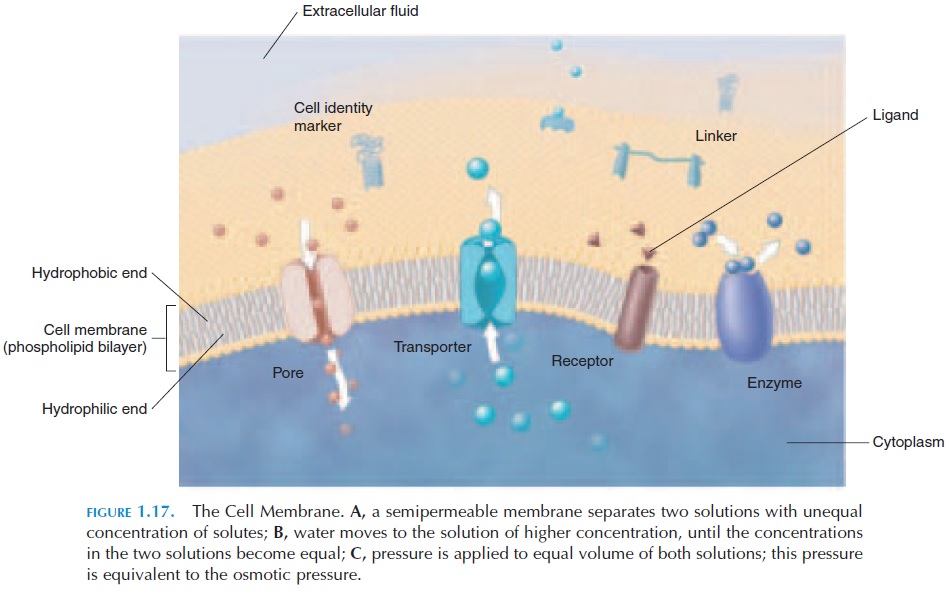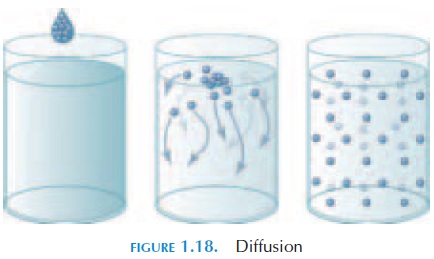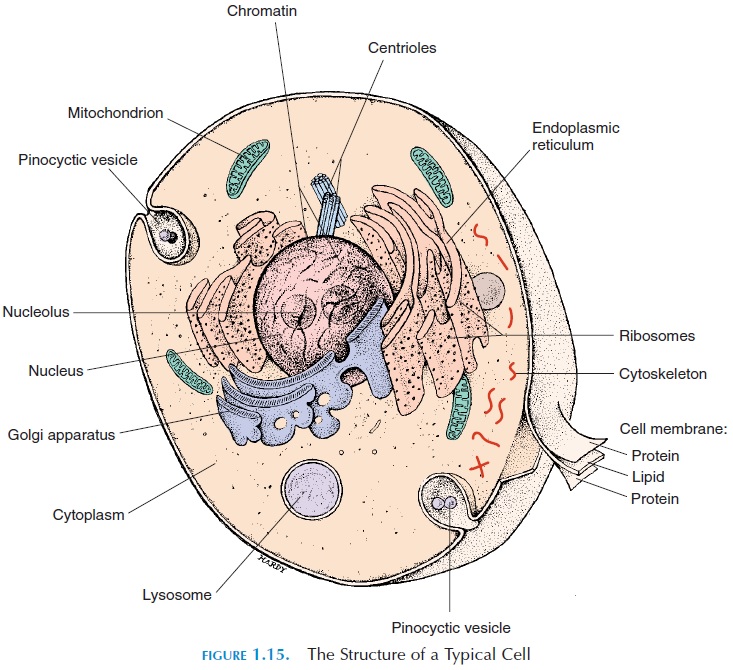Chapter: The Massage Connection ANATOMY AND PHYSIOLOGY : Introduction to Anatomy and Physiology
Cell Membrane (Plasma Membrane)
Cell Membrane (Plasma Membrane)
The cell membrane (see Figures 1.17and 1.18) is a thin, delicate layer that is made up of lipids, carbo-hydrates, and proteins. It is referred to as a phos-pholipid bilayer because it is made up of two layersof phospholipids. The phospholipids are lined in such a way that the end of the molecules containing the phosphate group that have an affinity for water— hydrophilic end—faces the outside of the cell membrane. The hydrophobic ends that contain the fatty acids face each other in the middle of the cell mem-brane. This arrangement of the cell membrane pre-vents water and water-soluble substances from cross-ing the lipid portion of the cell membrane. This arrangement is used because the composition of the cytoplasm of the cell is different from that of the fluid around it. These differences have to be maintained if the cell is to survive.

The phospholipid bilayer is interrupted in certain areas by proteins that go completely through the wall or are integrated into the wall with part of the protein molecule projecting into or out of the cell. These are known as membrane proteins. Because of the pres-ence of a large number of different proteins (mosaic) in the “sea” of phospholipids, the structure of the cell membrane is referred to as the fluid mosaic model.

The membrane proteins that go through and through are referred to as integral proteins. The others are referred to as peripheral proteins. The membrane proteins have many functions. Some pro-teins serve as anchors orlinkers and connect the cell membrane to surrounding structures to stabilize the cell. Others serve as recognition proteins, or identi-fiers, or cell identity markers. These are usually gly-coproteins that project out of the membrane and help the immune cells identify the cell as self or nonself. Some of the peripheral proteins are enzymes and fa-cilitate chemical reactions inside or outside the cell, depending on their position; others are receptors.
Receptor proteins are specific and have an affinity for specific hormones and other substances. The spe-cific extracellular molecules that stimulate the recep-tors are referred to as ligands. Each cell may have re-ceptors for more than one ligand, and the receptors vary from cell to cell. In this way, hormones, which are carried throughout the body by the blood, affect only cells that have receptors for the specific hor-mone.
Certain proteins located in the cell membrane may serve as carriers or transporters. If a specific solute becomes attached to the carrier, the protein carrier changes shape and transports the solute across the cell membrane. This may occur with or without the use of active energy. Certain integral proteins work as channels or gates; forming small paths across thecell membrane and allowing water and specific ions to pass through. The channels may be opened by changes in potential or by binding of ligands.
The carbohydrates in the membrane, although only contributing about 3% of the weight of the cell membrane, project outward and help form a layer that protects the cell membrane.

Related Topics